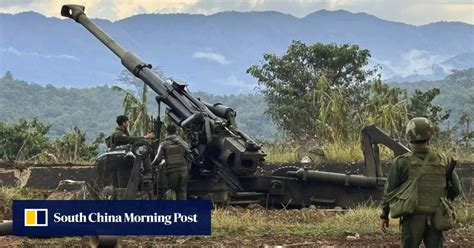Amid the chaos and devastation caused by last week’s earthquake in Myanmar, the military has made a significant announcement. The ruling junta’s State Administration Council declared a temporary ceasefire in an effort to expedite relief and reconstruction operations. This unexpected move, effective from 2nd April to 22nd April, comes as a ray of hope in a nation grappling with the aftermath of a catastrophic natural disaster.
The earthquake, measuring at magnitude-7.7, struck Myanmar last Friday, claiming the lives of at least 2,886 individuals with hundreds still missing. The impact reverberated beyond borders, leading to casualties in neighboring countries like Thailand. Against this backdrop of tragedy and loss, the ceasefire offers a glimmer of respite for affected communities.
“This ceasefire is crucial for accelerating relief efforts and aiding those caught in the quake’s aftermath,” said a spokesperson for the State Administration Council.
However, tensions have been simmering between rebel groups and the military amidst ongoing conflict in Myanmar. Earlier this week, rebel factions took matters into their own hands by announcing a unilateral ceasefire to support humanitarian operations – an initiative that was only reciprocated by the military after much delay.
Myanmar has been embroiled in internal strife following the military coup in 2021 which saw the junta seizing power. The subsequent clashes between government forces and ethnic militias have plunged the nation into turmoil. Recent reports highlighted an alarming incident where Myanmar troops allegedly fired upon a Chinese Red Cross convoy carrying essential supplies for earthquake relief efforts.
“The tragic events surrounding aid delivery underscore not only logistical challenges but also underlying geopolitical tensions,” remarked an international relations expert.
The Ta’ang National Liberation Army reported that military personnel targeted their convoy near Mandalay without causing any casualties. While investigations are underway to ascertain facts surrounding this troubling event, it underscores the complexities faced by humanitarian agencies operating on ground zero.
China’s involvement in providing assistance during this crisis adds another layer to an already intricate situation. With conflicting narratives emerging from different parties involved, questions arise about communication protocols and security measures essential for delivering aid effectively in volatile environments.
As international aid pours into earthquake-affected regions, concerns loom over discrepancies in official death toll figures released by authorities compared to actual estimates by independent sources. This disparity underscores broader issues of transparency and accountability amid evolving crises demanding swift action and coordinated responses from all stakeholders.
“The humanitarian crisis unfolding post-earthquake necessitates collaborative efforts ensuring seamless coordination among diverse actors involved,” emphasized a disaster management specialist.
Against this backdrop of uncertainty and challenges lies a rallying cry for unity amidst adversity – one that transcends political divides and calls for collective action towards rebuilding shattered lives and communities ravaged by nature’s fury.
In conclusion, Myanmar stands at a critical juncture where decisions made today will shape its path towards recovery or further descent into chaos. The ceasefire announcement marks a symbolic gesture towards healing wounds that run deep within society while underscoring the urgent need for solidarity amid trials that test resilience and resolve alike.

